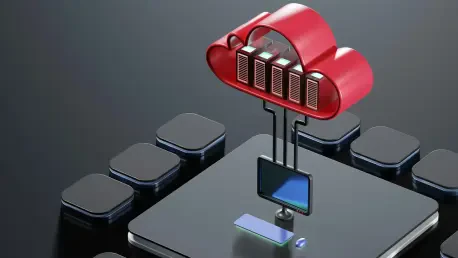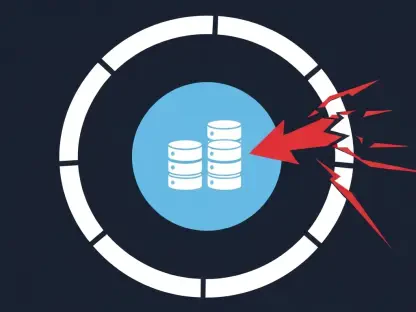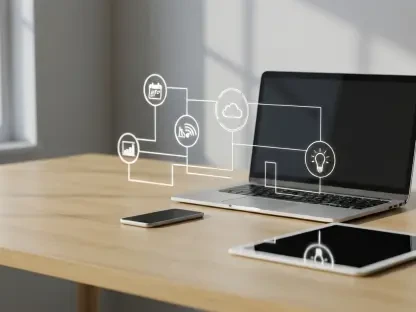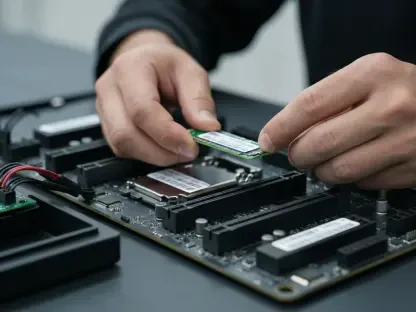As government operations increasingly transition to digital and distributed environments, the demand for robust IT security solutions has reached unprecedented levels. Modern security frameworks are essential to combat the surging cyber threats that besiege federal and state agencies. These threats necessitate sophisticated, unified security measures to ensure comprehensive protection across various platforms and networks.
Escalating Cyber Threats and Financial Impact
Rising Incidents and Costs
The fiscal year 2023 saw federal agencies report over 32,000 security incidents, underscoring the severe impact of cyber threats on government operations. These incidents resulted in billions of dollars allocated to investigations and repairs, highlighting the costly repercussions of inadequate security measures. This financial strain is compounded by a significant increase in the average cost of data breaches. In 2024, research from the Ponemon Institute revealed that the average cost of a data breach surged to $4.88 million per incident, reflecting a 10% increase from the previous year.
Government agencies are under continuous pressure to address these financial risks while ensuring that sensitive information remains secure. The escalating costs associated with cyber threats reveal the dire need for enhanced security solutions capable of effectively mitigating risks. As cyber-criminal tactics evolve, government entities must adapt with equally advanced defenses to protect their digital assets and operations from costly breaches.
Expanded Vulnerabilities
The rapid evolution of digital solutions, coupled with the widespread adoption of multi-cloud environments, has exacerbated security vulnerabilities for government agencies. The complexity of these distributed systems increases exposure points, creating additional opportunities for cyber actors and hostile nation-states to exploit technical weaknesses. The Cisco Talos Threat Intelligence Group reported an alarming rise in Common Vulnerabilities and Exposures (CVEs), with the number of CVEs increasing from 29,166 in 2023 to 40,289 in 2024.
Traditional security mechanisms, which often operate in silos, are proving to be insufficient in countering the sophisticated threats of today’s cyber landscape. These tools typically require considerable maintenance efforts and specialized personnel, further straining agency resources. As security risks become more pronounced, there is an urgent need for integrated security platforms that provide comprehensive and streamlined protection without overwhelming the IT infrastructure.
The Emergence of Security Service Edge (SSE)
The Need for Integrated Security
In response to the growing cyber threats, agencies are increasingly turning to Security Service Edge (SSE) platforms. SSE represents a modern approach that converges and consolidates various security technologies into a unified, cloud-delivered network security architecture. This integrated framework secures user access to applications and resources across multiple use cases and environments, offering a significantly enhanced layer of protection.
Despite advancements in zero-trust security postures among federal and state agencies over the past three years, the implementation of integrated security platforms remains crucial. These platforms provide holistic visibility and control, which are essential for safeguarding government data systems against the escalating cyber-attacks. By offering a consolidated security approach, SSE helps agencies streamline their defenses and maintain a robust security posture.
The Role of SASE
The convergence of SSE with software-defined wide area network (SD-WAN) capabilities leads to the formation of Secure Access Service Edge (SASE). SASE architecture enhances application access security across diverse environments, ensuring that users can securely connect to resources regardless of their location. According to Gartner, SASE is gaining significant traction and is projected to grow at an average annual rate of more than 30% through 2027.
The growing preference for single-vendor solutions in SSE/SASE implementations underscores the need for streamlined and cohesive security strategies. A recent IDC survey revealed that 84.7% of SSE/SASE buyers favor a single vendor for all components, reflecting the industry’s shift toward simplified and integrated security solutions. By leveraging SASE, agencies can achieve comprehensive security coverage and efficiently manage their IT infrastructures.
Cisco’s Advanced SSE Solutions
Secure Internet Access
Cisco’s suite of SSE solutions offers comprehensive protection across multiple layers of internet access security. The Secure Internet Gateway (SIG), secure web gateway, and cloud-delivered firewall supplemented with Snort 3.0 Intrusion Prevention System (IPS) combine to deliver robust security. Additionally, Cloud Access Security Broker (CASB) and data loss prevention (DLP) technologies work in tandem to ensure all-encompassing security measures.
These components address a wide spectrum of security needs, from monitoring web traffic to verifying user identities and device security. The integration of these technologies within Cisco’s SSE solutions provides agencies with a unified approach to internet access security. This comprehensive protection ensures that government networks are safeguarded from various threats, enabling secure and reliable access to online resources.
Secure Private Access
Cisco’s SSE solutions also encompass Secure Private Access offerings. This feature integrates Zero Trust Network Access (ZTNA), VPN-as-a-Service (VPNaaS), and unified management capabilities, covering both Secure Internet Access and Secure Private Access. This consolidation ensures stringent controls over user access to sensitive data and applications, maintaining high-security standards while simplifying management.
Unified management through a single console facilitates seamless administration of security measures, reducing the complexity of maintaining multiple security systems. Cisco’s approach to Secure Private Access not only enhances security but also improves operational efficiency by consolidating various security functions into a single, cohesive platform. This unified solution streamlines the process of verifying identities, assessing device security, and enforcing access controls.
Key Benefits for Government Agencies
User and Device Verification
One of the critical advantages of Cisco’s SSE solutions is the meticulous verification of user identities and device security. By employing advanced authentication mechanisms, Cisco ensures that only authorized personnel have access to sensitive government data. This stringent verification process mitigates the risks associated with unauthorized access and potential data breaches, enhancing the overall security posture of government agencies.
The streamlined interface and integrated management features of Cisco’s SSE solutions simplify the administration of security protocols. By consolidating security functions into a single platform, agencies can efficiently manage user and device verification processes. This approach not only fortifies security measures but also reduces the administrative burden on IT staff, making it easier to maintain high-security standards.
Comprehensive Threat Monitoring
Monitoring network traffic for malicious activities is a central component of Cisco’s SSE offerings. Advanced threat detection systems continuously analyze network traffic to identify and mitigate potential threats before they reach users’ devices. By proactively blocking threats, Cisco’s solutions ensure that malicious activities are swiftly neutralized, preventing potential damage to government networks and digital assets.
Cisco’s proactive threat monitoring capabilities are essential for maintaining robust security in the face of evolving cyber threats. These systems leverage real-time data analysis to detect anomalies and potential security breaches, ensuring that threats are addressed promptly. This continuous vigilance is crucial for protecting sensitive government information and maintaining the integrity of digital operations.
Cisco’s Longstanding Government Partnership
Deep Insights and Compliance Support
Cisco’s extensive experience in empowering government agencies has resulted in deep insights into emerging threats and their impact on cybersecurity strategies. The company’s solutions prioritize resiliency and compliance, key factors in the security strategies of modern government entities. By providing reliable cloud-based security controls, Cisco supports agencies in maintaining flexible and adaptive security measures.
The emphasis on resiliency ensures that government agencies can quickly recover from cyber incidents and continue their operations with minimal disruption. Compliance support, on the other hand, is critical for meeting regulatory requirements and maintaining the trust of public stakeholders. Cisco’s robust security solutions offer a reliable foundation for agencies to build and sustain their cybersecurity infrastructure.
Portfolio of Integrated Solutions
As government agencies shift more of their operations to digital and distributed environments, the requirement for advanced IT security solutions has soared to unprecedented heights. The rise in cyber threats targeting federal and state agencies underscores the need for sophisticated and unified security measures. These modern security frameworks are crucial for ensuring comprehensive protection across an array of platforms and networks, which are increasingly subject to malicious attacks. By implementing these advanced security protocols, agencies can safeguard sensitive data, maintain the integrity of their operations, and meet compliance standards. This drive for heightened cybersecurity is not just a matter of protecting information but is essential for the overall functionality and trustworthiness of government operations. The challenge lies in staying ahead of continuously evolving cyber threats, which necessitate adaptable and resilient security strategies. Overall, as digital transformation continues to advance, the demand for robust, all-encompassing security frameworks becomes even more critical.









